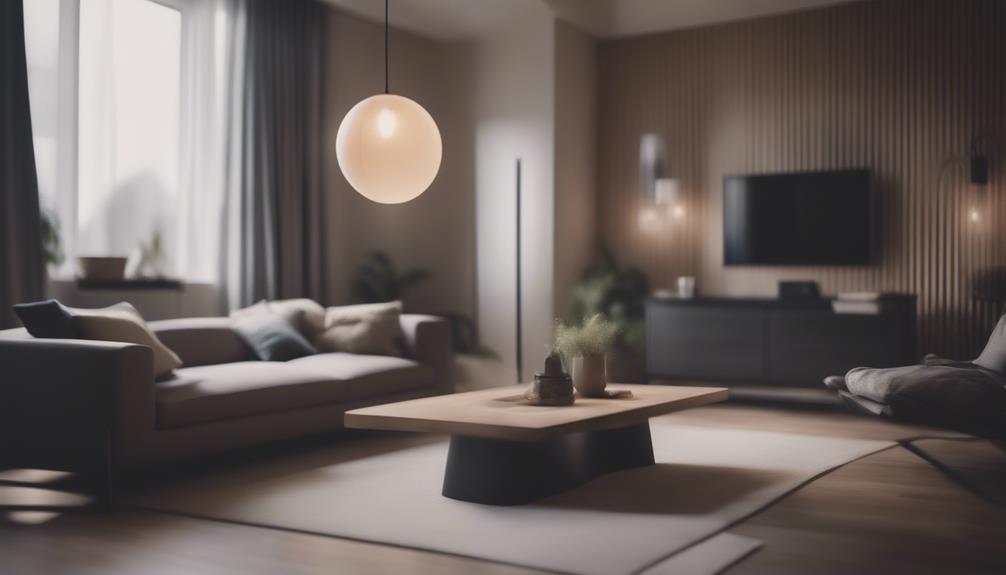LED lighting offers numerous advantages when it comes to brightness. For starters, LEDs produce high levels of illumination with greater lumen output, providing efficient and adaptable brightness for a variety of settings. Their directional light emission reduces wasted light, improving lighting control without the need for extra reflectors. In addition, LEDs are cost-effective due to their efficiency and generate minimal heat, making them safer for enclosed spaces. Their color versatility allows for a wide range of lighting options to meet different needs. Finally, their ability to withstand shock, vibrations, and impacts makes LEDs a durable and long-lasting lighting solution. Learn more about the benefits of LED lighting.
Key Takeaways
- LEDs offer superior brightness levels for efficient illumination.
- Higher lumen output compared to traditional lighting sources.
- Adjustable brightness for customizable lighting solutions.
- Cost-effective lighting option with long-term savings.
- Enhanced visibility and clarity with LED lighting.
Energy Efficiency
LED lighting stands out as a highly efficient alternative to traditional bulbs, offering energy savings of up to 85%. Thanks to advancements in LED technology, these lights consume less wattage, resulting in reduced energy consumption and lower electricity bills.
LEDs have the ability to convert up to 90% of the energy they use into light, maximizing energy efficiency in various lighting solutions. For instance, a single LED tube can replace two fluorescent tubes, leading to additional energy savings in the long run.
Longevity

LED lighting is known for its exceptional longevity, with some bulbs lasting up to 50,000 hours. This extended lifespan translates to reduced maintenance costs and less frequent replacements, offering both time and money savings.
Additionally, the durability of LED bulbs guarantees consistent performance over time, making them a reliable and efficient lighting solution.
Energy-Efficient Lighting Solution
Maximizing longevity in lighting solutions is essential for reducing waste and ensuring consistent performance over an extended period. LED lighting stands out as an energy-efficient option with long-lasting capabilities, lasting up to 50,000 hours compared to traditional bulbs.
The durability of LED light bulbs reduces the need for frequent replacements, contributing to energy savings and environmental benefits. By choosing LED lights known for their longevity, individuals and businesses can enjoy cost savings in the long run while supporting sustainability efforts.
LED lights are designed to maintain their performance even in extreme temperatures, offering reliable brightness and efficiency over time. This reliable and energy-efficient lighting solution not only saves money but also minimizes environmental impact through reduced waste.
Reduced Maintenance Costs
Efficient lighting solutions like LED technology greatly reduce maintenance costs by lasting up to 50,000 hours, decreasing the need for frequent bulb replacements. LED bulbs' longevity, such as Sunco's BR30 LED Light Bulb that can last up to 22.8 years with 3 hours of daily use, showcases their extended operational life. This increased durability compared to traditional incandescent bulbs not only saves on replacement expenses but also contributes to a more sustainable future by reducing waste.
LED technology's ability to perform well in extreme temperatures further enhances its longevity and reliability, making it a cost-effective choice for both residential and commercial settings. By investing in LED lighting, individuals and businesses can enjoy reduced maintenance costs and long-term savings.
Directional Light Emission
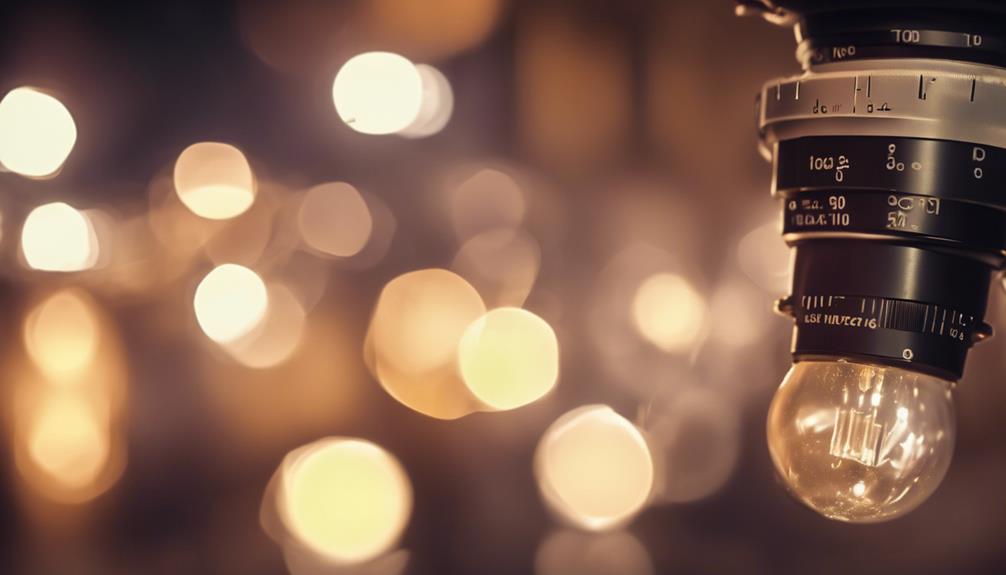
Directional light emission in lighting technology plays a crucial role in focusing light where it's needed most effectively. Unlike traditional bulbs that emit light in all directions, LEDs emit light in a specific direction, reducing wasted light.
This inherent directionality of LEDs eliminates the need for additional reflectors to redirect light, making them more efficient in application. The focused light emission of LEDs contributes to higher application efficiency and better lighting control compared to traditional lighting sources.
By directing light precisely where it's needed, LED lighting enhances overall brightness in a targeted manner. This feature not only increases the effectiveness of lighting but also helps in reducing energy consumption by ensuring that light is used purposefully.
The directional light emission capability of LEDs is a significant advantage that sets them apart in terms of efficiency and control in various lighting applications.
Minimal Heat Production
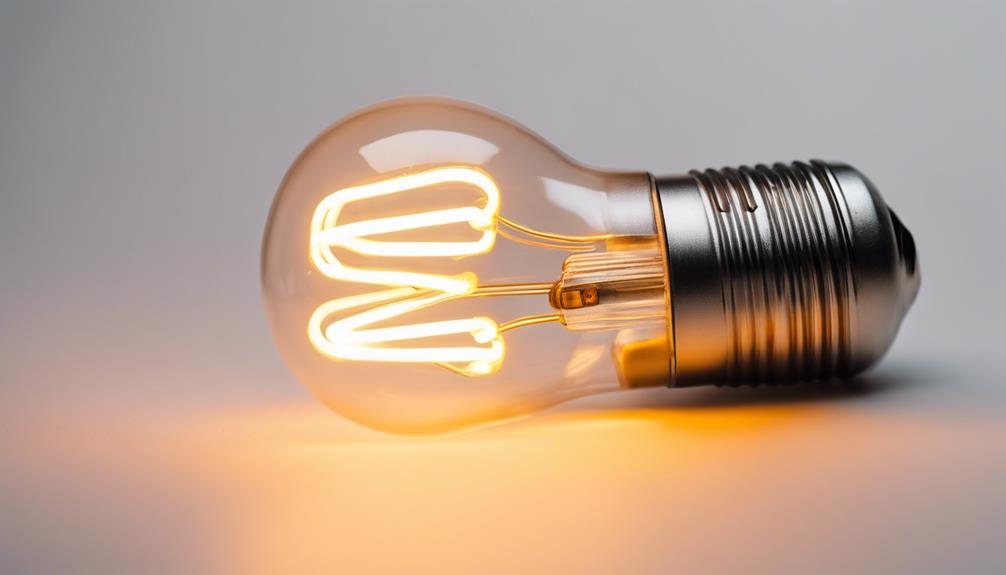
LED lighting's crucial heat production sets it apart from traditional bulbs, making it a safer and more energy-efficient option for various applications. Unlike incandescent or halogen bulbs that waste energy by emitting heat, LEDs convert a higher percentage of energy into light, resulting in markedly less heat generation. This characteristic makes LEDs cooler to the touch, reducing the risk of burns and enhancing safety in environments where heat can be a concern.
Due to their low heat output, LED lights are suitable for enclosed spaces or areas with limited ventilation. The reduced heat emission not only contributes to the safety aspect but also plays an essential role in energy efficiency. By producing less heat than traditional lighting sources, LEDs help in saving electricity that would otherwise be wasted on generating excess heat. This makes LED lighting a practical choice for those looking to minimize energy consumption while maintaining a comfortable and safe environment.
Color Versatility

LED lighting offers a vast array of color options, allowing users to create different moods and settings effortlessly. By blending red, green, and blue LEDs, LED bulbs can produce a wide range of colors to suit various preferences.
The color versatility of LED lighting not only enhances the ambiance of a space but also provides excellent color rendering capabilities, making colors appear vivid and true to life.
Color Options Galore
Color versatility in lighting solutions offers a spectrum of options to cater to diverse preferences and needs, enhancing the ambiance of various spaces. LED lighting provides a wide variety of color options, from warm white to cool white to daylight, enhancing color rendering and design flexibility.
LEDs can emit light in red, green, blue, or RGB combinations, allowing for customizable lighting solutions. This significance in color options plays a vital role in setting the mood in both residential and commercial settings. Whether one prefers warm tones for a cozy atmosphere or cool tones for a productive workspace, LED lighting guarantees the desired light quality for different purposes.
The spectrum of colors available makes LED lighting suitable for accent lighting, decorative applications, and overall aesthetic enhancements.
Mood Setting Magic
With a spectrum of colors available, setting the perfect mood through lighting becomes a seamless and transformative experience. LED lighting's ability to offer various color temperatures allows for the creation of different moods in diverse settings.
By adjusting the color and brightness, one can easily tailor the ambiance to enhance the mood of any space. Additionally, LEDs excel in color rendering, boasting high Color Rendering Index (CRI) values that guarantee colors appear true and vibrant.
The color versatility of LED lights enables dynamic lighting effects, making them ideal for mood lighting applications in homes, restaurants, and entertainment venues. Whether dimmed or adjusted, LED mood lighting is a popular choice for crafting inviting atmospheres that suit various occasions and preferences.
Significant Energy Savings
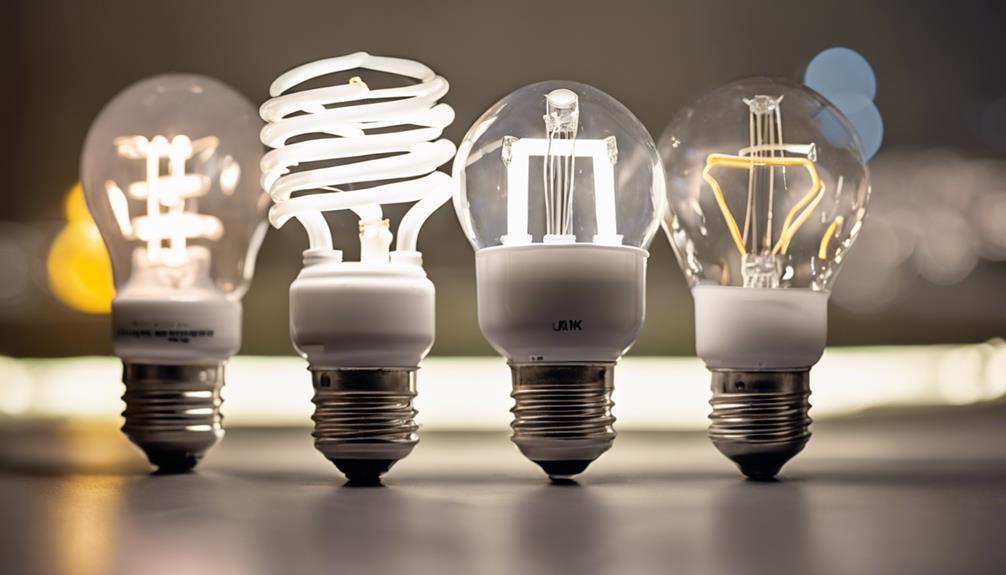
Enjoying substantial energy savings, LED lighting has revolutionized the way we illuminate our spaces. The shift from traditional bulbs to LED technology has brought about significant reductions in energy consumption. Here are some key points to take into account:
- LED lighting can save up to 85% more energy compared to traditional bulbs.
- Residential LEDs use at least 75% less energy than incandescent lighting.
- LED lighting can last up to 25 times longer than incandescent lighting.
- By 2035, the majority of lighting installations in the US are expected to utilize LED technology.
These energy savings not only benefit consumers by lowering electricity bills but also contribute to environmental conservation efforts. As LED technology becomes more prevalent and efficient, the potential for substantial energy savings continues to grow. The projected 569 TWh annual energy savings by 2035 highlight the significant impact LED lighting can have on reducing energy consumption and promoting sustainability.
Brighter Illumination

Boasting superior brightness levels, LED lighting outshines traditional lighting sources with its efficient illumination. LEDs emit a higher level of brightness per watt, making them more efficient in providing light. This increased efficiency not only enhances visibility but also leads to significant energy savings. LED lights offer a higher lumen output, ensuring a well-lit space with improved clarity and visibility. What sets LED lighting apart is its ability to deliver this enhanced brightness while consuming less energy.
Moreover, LED technology allows for adjustable brightness, catering to various needs and preferences. Whether it's for creating a cozy ambiance at home or ensuring excellent visibility in industrial settings, LED lighting offers superior brightness levels that can be easily tailored to specific requirements. The versatility of LED lighting in terms of brightness makes it a popular choice across different applications. With LED lighting, you can enjoy brighter illumination without compromising on energy efficiency and cost-effectiveness.
Lower Maintenance Requirements
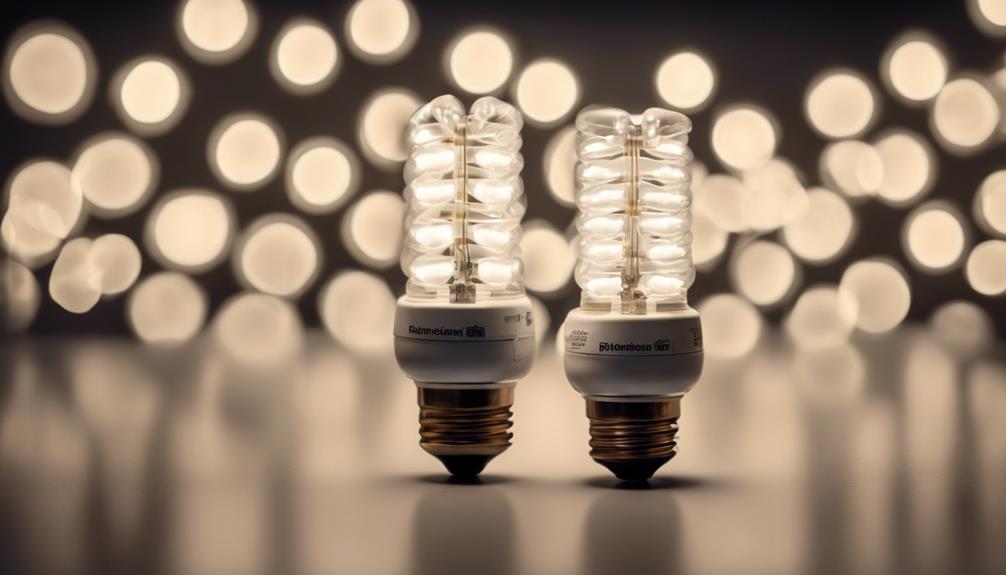
LED lighting's lower maintenance requirements are a noteworthy advantage due to the extended lifespan of LED bulbs, lasting up to 50,000 hours. This longevity leads to reduced maintenance costs and enhances operational efficiency in various settings. Here are the key benefits of LED lighting with regard to lower maintenance requirements:
- Cost Savings: With reduced bulb replacements, maintenance costs are markedly lower compared to traditional lighting solutions.
- Reliability: LED lights have lower failure rates and don't burn out abruptly, minimizing the need for frequent maintenance interventions.
- Minimized Interventions: The longevity of LEDs reduces the frequency of maintenance visits, making them ideal for hard-to-reach or high-ceiling installations.
- Operational Efficiency: Overall, the lower maintenance requirements of LED lighting contribute to cost savings and operational efficiency, making them a practical choice for both residential and commercial spaces.
Enhanced Durability

LED lighting provides enhanced durability with a lifespan of up to 50,000 hours, minimizing the need for frequent replacements.
These lights are designed to withstand shock, vibrations, and external impacts, making them suitable for challenging conditions.
Their resilience in extreme temperatures guarantees reliable performance in a variety of environments, supporting sustainability efforts by minimizing waste and maintenance costs.
Long-Lasting LED Lifespan
In addition, with an operational lifespan of up to 100,000 hours, LED bulbs demonstrate exceptional durability compared to traditional lighting options. LED lighting systems have an impressive life expectancy, lasting approximately 11 years of continuous operation.
Unlike standard lights that burn out, LEDs gradually emit lower output levels over time, with diodes remaining functional. It would take around 20 years before needing to replace an LED bulb used for 8 hours a day, showcasing their long operational life time.
Additionally, LEDs are highly durable and resistant to shock, vibrations, and external impacts, making them ideal for rough conditions. By reducing the carbon footprint, one LED bulb can save the production of 25 incandescent bulbs.
Resilient Against Damage
Exhibiting impressive resilience against damage, LED lighting systems are highly durable and can withstand a variety of challenging conditions. LED lights are designed to endure rough conditions, making them resistant to shock, vibrations, and impacts. This durability makes them a preferred choice for outdoor lighting, where they showcase their resilience against damage in various weather conditions.
Areas exposed to vandalism or high traffic benefit from LED lights' robustness and reliability. LED lighting systems excel in withstanding extreme temperatures, ensuring long-term performance even in environments with fluctuating weather conditions. Their ability to withstand rough conditions and maintain functionality under duress highlights the durability that sets LED lighting apart as a reliable and long-lasting lighting solution.
Improved Safety

Enhancing safety through immediate illumination, LED lighting offers a range of advantages that contribute to accident prevention and secure environments. LED lighting improves safety by providing instant illumination, reducing the risk of accidents in poorly lit areas.
LEDs emit less heat, decreasing the chance of burns or fire hazards in enclosed spaces. Additionally, LED lights are durable and shock-resistant, making them safer in environments prone to vibrations or impact.
The directional light of LEDs reduces glare and enhances visibility, promoting a safer working or living environment.
- LED lighting provides instant illumination, reducing the risk of accidents in poorly lit areas.
- LEDs emit less heat, decreasing the chance of burns or fire hazards in enclosed spaces.
- LED lights are durable and shock-resistant, making them safer in environments prone to vibrations or impact.
- The directional light of LEDs reduces glare and enhances visibility, promoting a safer working or living environment.
Frequently Asked Questions
What Are 3 Advantages of LED Lighting?
LED lighting offers numerous advantages, including energy efficiency, longer lifespan, and low heat emission. These benefits make LEDs a popular choice for both residential and commercial lighting needs.
With advancements in technology, LED lights now provide high brightness levels while consuming minimal energy, reducing electricity costs. Additionally, LEDs emit directional light, reducing light pollution and focusing illumination where it's needed most.
These advantages contribute to the widespread adoption of LED lighting in various applications.
What Is the Best Brightness for Led?
When determining the best brightness for LED lighting, it's important to take into account lumens as a measure of light output. For residential use, aiming for 800-1100 lumens in a 60-watt incandescent bulb replacement is often ideal.
In commercial environments, 2000-3000 lumens are commonly chosen for task lighting and general illumination. The specific application and desired level of illumination dictate the best brightness, with a variety of LED fixtures offering customizable options to suit different needs.
What Are the Brightness Levels of LED Lights?
LED lights offer a wide range of brightness levels, from 200 to over 20,000 lumens, depending on the type and application. They provide equivalent brightness to traditional bulbs while consuming less wattage.
Commercial LEDs suit large spaces, while residential options come in various brightness levels, such as 800 lumens for a standard 60W bulb replacement. LED fixtures can be customized for different lighting needs like task, accent, or ambient lighting.
What Are the Benefits of Upgrading to LED Lighting?
Upgrading to LED lighting offers a multitude of benefits. LED lights are energy-efficient, saving up to 85% more energy than traditional bulbs. They've a long lifespan of up to 50,000 hours, reducing the need for frequent replacements.
LED bulbs are environmentally friendly as they don't contain toxic elements like mercury. Additionally, LED lights emit less heat, making them safer for various applications while providing high brightness with low wattage consumption for efficient illumination.
Conclusion
To sum up, the benefits of LED lighting are truly illuminating. From energy efficiency to enhanced safety, these lights shine bright in every aspect. With their longevity, durability, and minimal maintenance requirements, LED lighting is a beacon of efficiency and convenience.
Say goodbye to dim, outdated lighting and step into the future with the brilliance of LED technology. It's not just a lightbulb moment – it's a revolution in lighting.
